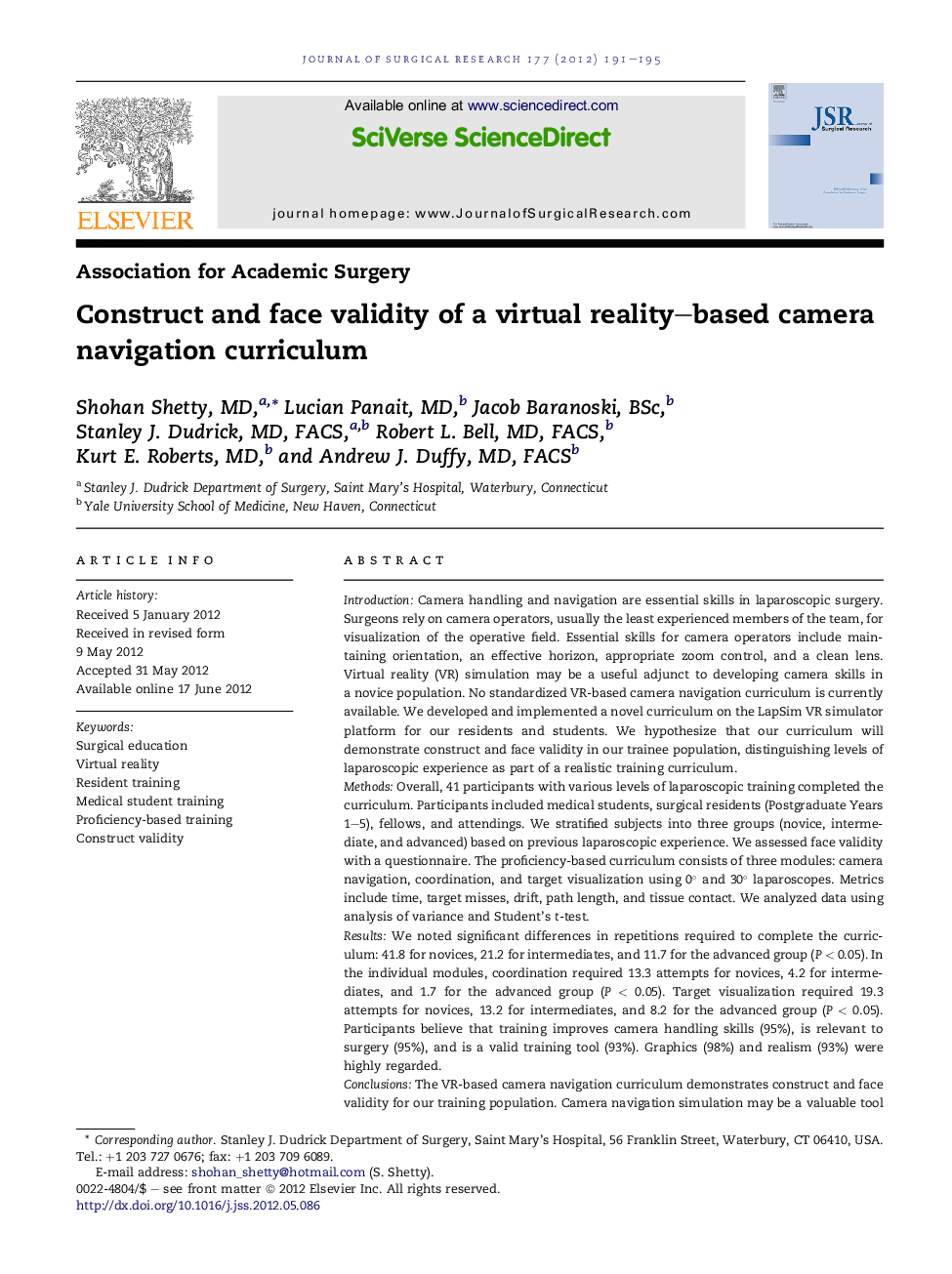| کد مقاله | کد نشریه | سال انتشار | مقاله انگلیسی | نسخه تمام متن |
|---|---|---|---|---|
| 4301201 | 1288434 | 2012 | 5 صفحه PDF | دانلود رایگان |

IntroductionCamera handling and navigation are essential skills in laparoscopic surgery. Surgeons rely on camera operators, usually the least experienced members of the team, for visualization of the operative field. Essential skills for camera operators include maintaining orientation, an effective horizon, appropriate zoom control, and a clean lens. Virtual reality (VR) simulation may be a useful adjunct to developing camera skills in a novice population. No standardized VR-based camera navigation curriculum is currently available. We developed and implemented a novel curriculum on the LapSim VR simulator platform for our residents and students. We hypothesize that our curriculum will demonstrate construct and face validity in our trainee population, distinguishing levels of laparoscopic experience as part of a realistic training curriculum.MethodsOverall, 41 participants with various levels of laparoscopic training completed the curriculum. Participants included medical students, surgical residents (Postgraduate Years 1–5), fellows, and attendings. We stratified subjects into three groups (novice, intermediate, and advanced) based on previous laparoscopic experience. We assessed face validity with a questionnaire. The proficiency-based curriculum consists of three modules: camera navigation, coordination, and target visualization using 0° and 30° laparoscopes. Metrics include time, target misses, drift, path length, and tissue contact. We analyzed data using analysis of variance and Student's t-test.ResultsWe noted significant differences in repetitions required to complete the curriculum: 41.8 for novices, 21.2 for intermediates, and 11.7 for the advanced group (P < 0.05). In the individual modules, coordination required 13.3 attempts for novices, 4.2 for intermediates, and 1.7 for the advanced group (P < 0.05). Target visualization required 19.3 attempts for novices, 13.2 for intermediates, and 8.2 for the advanced group (P < 0.05). Participants believe that training improves camera handling skills (95%), is relevant to surgery (95%), and is a valid training tool (93%). Graphics (98%) and realism (93%) were highly regarded.ConclusionsThe VR-based camera navigation curriculum demonstrates construct and face validity for our training population. Camera navigation simulation may be a valuable tool that can be integrated into training protocols for residents and medical students during their surgery rotations.
Journal: Journal of Surgical Research - Volume 177, Issue 2, October 2012, Pages 191–195